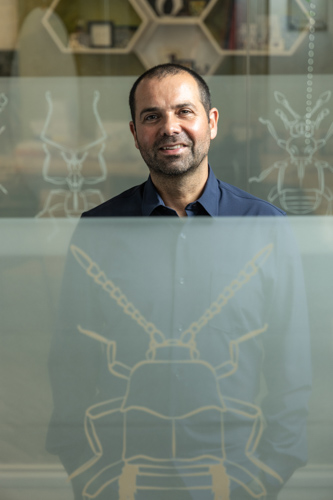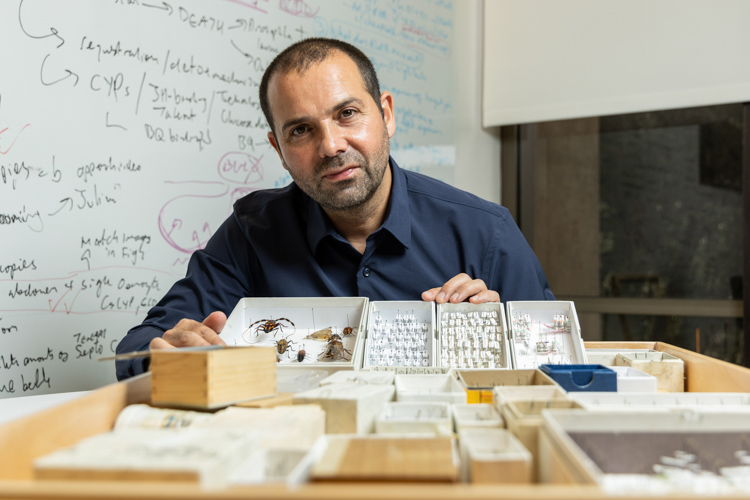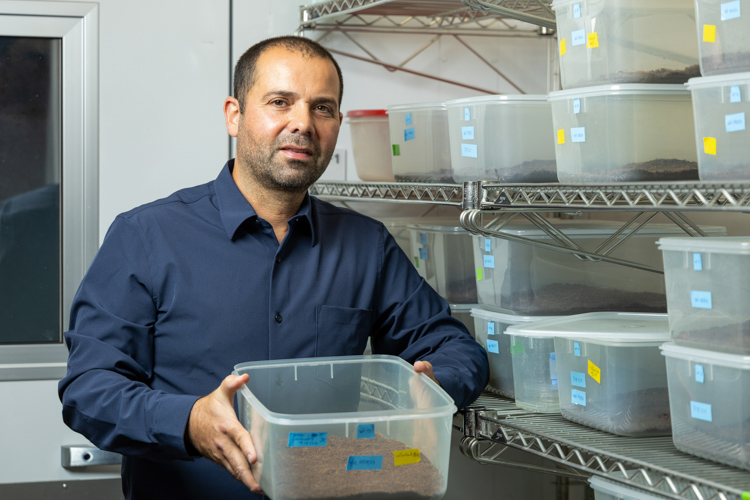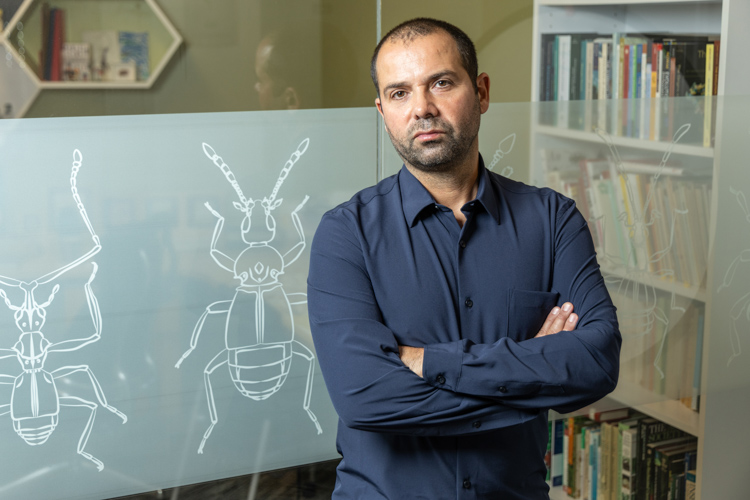About Joseph's Work
Joseph Parker is an evolutionary biologist exploring the evolution of symbiosis and species interactions through the study of rove beetles that coexist with ants. Most of the 67,000 known species of rove beetle (Staphylinidae) live independently, but numerous lineages have evolved chemical, behavioral, and anatomical features that allow them to survive and thrive within ant colonies. Parker combines deep knowledge of the diverse species of Staphylinidae with molecular and genomic tools to tease out the evolutionary pathways from free-living to symbiotic lifestyles.
In early work, Parker uncovered evidence that in at least 12 different instances, symbiotic rove beetle lineages evolved from a free-living common ancestor. Beginning around 100 million years ago, 12 distinct myrmecoid (ant-mimicking) lineages arose from within the Aleocharinae subfamily. These lineages developed anatomical and behavioral traits that ants recognized and accepted, allowing the beetles to integrate inside colonies. Parker’s findings are a rare example of convergent evolution over a deep and extended time period. Convergent evolution is when different species develop similar adaptations in response to similar environmental pressures. The symbiotic beetles challenge the view that evolution is largely unpredictable over long timeframes. This discovery motivated Parker to study the evolution of specific traits that enable rove beetles to coexist with ants. Rove beetles of the Aleocharinae subfamily possess an abdominal tergal gland that can secrete noxious chemical compounds. Parker’s examination of the molecular architecture of the gland revealed that it evolved from two different cell types—one that produces a repellent, and another that produces solvents to weaponize the repellant. Using single-cell transcriptomics, Parker and his team inferred that the adaptive functional properties of the secretory cells evolved via repurposed messenger RNA modules from older metabolic cell types. This work brought to light fundamental steps by which multicellular organs with new functions originate during evolution. With this defense, rove beetles could enter ant colonies and take their first steps toward symbiosis.
Currently, Parker is delving into the neurobiological roots of symbiotic behaviors and how beetle behavior and chemistry co-evolve with each other. His team has genetically modified a free-living rove beetle, Dalotia coriara, a species that can be maintained in the laboratory. Insights gleaned from controlled laboratory experiments with Dalotia and related symbiotic rove beetles are revealing critical changes in behavior and chemistry underlying the evolutionary transition to life within ant colonies. For example, some rove beetles have repurposed the tergal gland to make secretions that appease or intoxicate ants, rather than functioning defensively. By uncovering how the rove beetle remodeled itself toward symbiotic life, Parker is illuminating long-standing questions about the evolution of interspecies relationships that underpin the natural world.













